Note: I also posted a video with more information and a demonstration of how I live stream.
I've been working on video streaming on a tight budget for years, and have scrambled to get live-streaming going for some liturgies on short notice, so I figured I'd put together a video showing a few options from 'cheap using what you already have' to 'a little more expensive but within a reasonable budget'. Note that if you plan on having regular video streams for the long term, it's better to invest in a proper streaming system with remote-controlled PTZ cameras and hard-wired connections.
All of the options in this post will require at least a smartphone or computer (laptop preferred) with a good WiFi connection. Ideally, you can also plug your phone or laptop into power so the battery doesn't run out in the middle of the stream
Streaming to YouTube or Periscope (or elsewhere) with a phone
The simplest setup I can think of is to grab your smartphone, grab a tripod, and mount the phone on the top using a smartphone tripod mount:
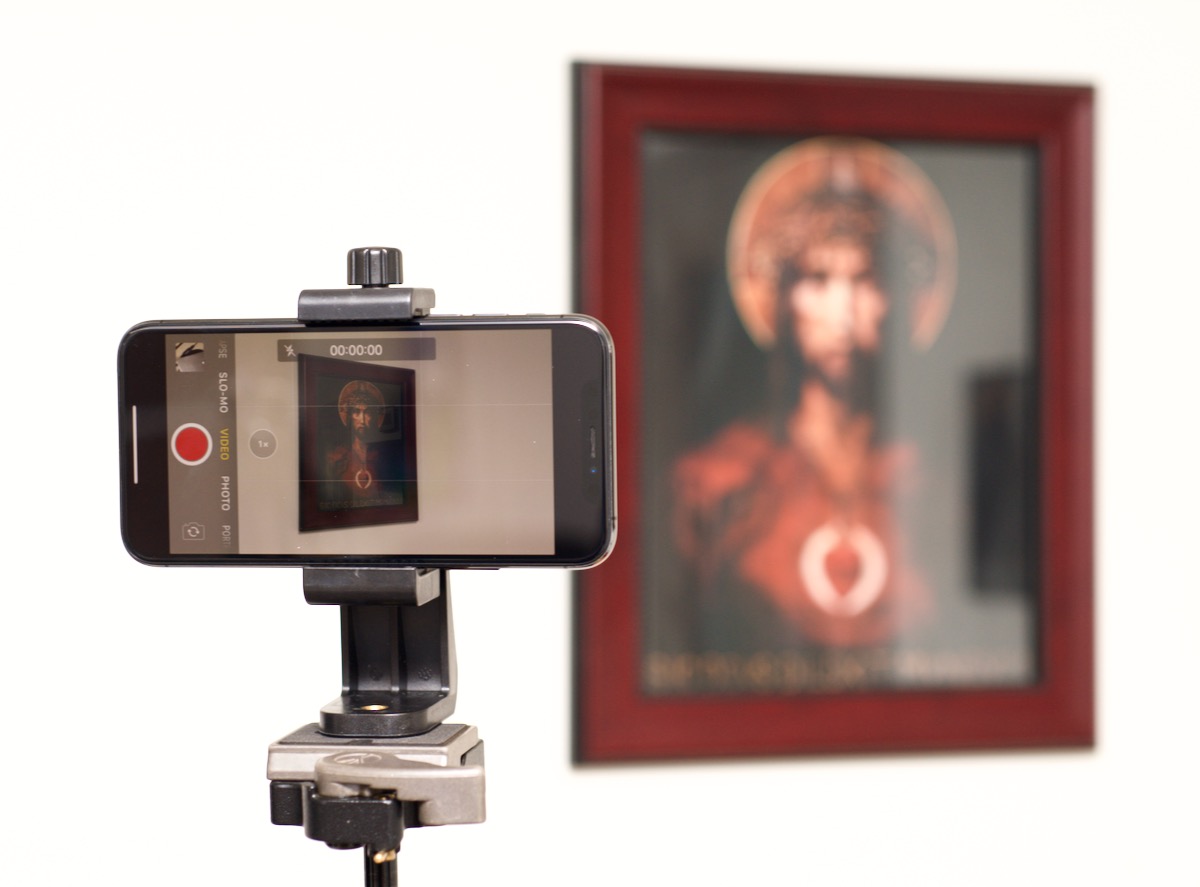
A smartphone on a tripod lets you easily stream with Periscope, YouTube, or Twitch.
You can use YouTube's mobile app to stream live (if you already have a YouTube channel and meet the minimum requirements), or you can use Periscope, which doesn't have any restrictions for mobile streaming. Mount the phone on the tripod (use horizontal / landscape orientation for the best image), start the stream, and share the link with everyone via social media (and any other communication tools you have like Flocknote.
Streaming to YouTube with a Laptop
If streaming with YouTube on a laptop, log into your YouTube account and enable Live Streaming on your channel. You should do this ASAP (right now if you need to!) because you need to have a verified YouTube account (which can take time), and then you also need to create a test live stream (this first stream can take up to 24 hours to be ready; after that it's instant).
Once streaming is set up, you can do a simple 'webcam' stream using the webcam built into the laptop—or an external one mounted on a tripod or clipped to the laptop display:
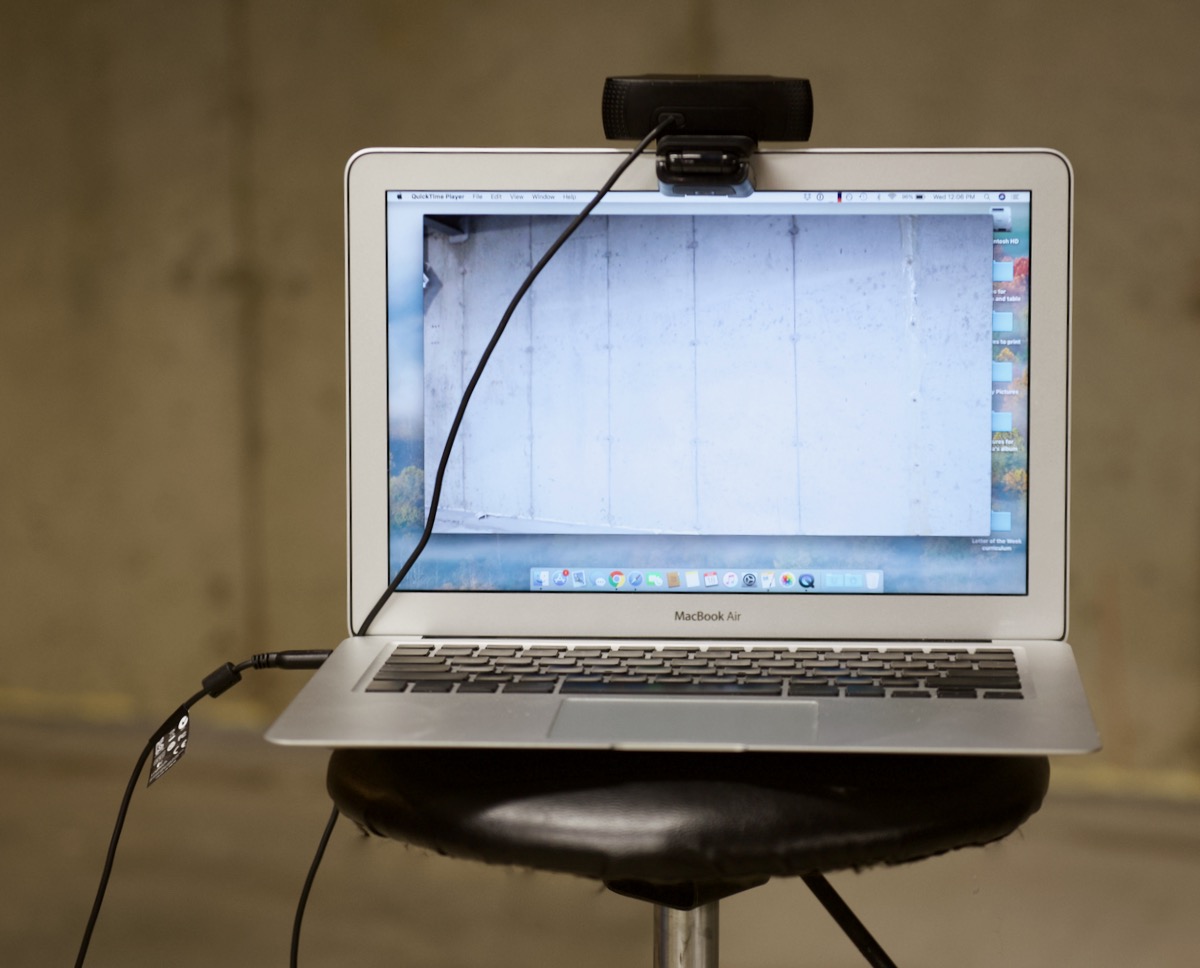
A laptop with a webcam, sitting on a chair. Easiest option with decent quality.
I recommend either the Logitech StreamCam (which requires USB-C on your computer) or the Logitech Brio (which works with a variety of USB ports, so is better for older computers).
Note: Most of this equipment can be sourced from a local electronics store like Best Buy, if you can't get it shipped in time.
For the best picture and sound, especially if you don't have a congregation (sine populo), you can set the laptop on a pew or chair somewhere in the middle aisle, close to the sanctuary (check the framing using the webcam's software, making sure you cover the altar, lectern, and anywhere else the priest/celebrant will go), and use a tripod (any generic tripod will do in a pinch, like this one from Amazon) to give a more stable mounting point for the camera (many webcams have a 'tripod socket' in the base for this—both of the above-mentioned cameras do):
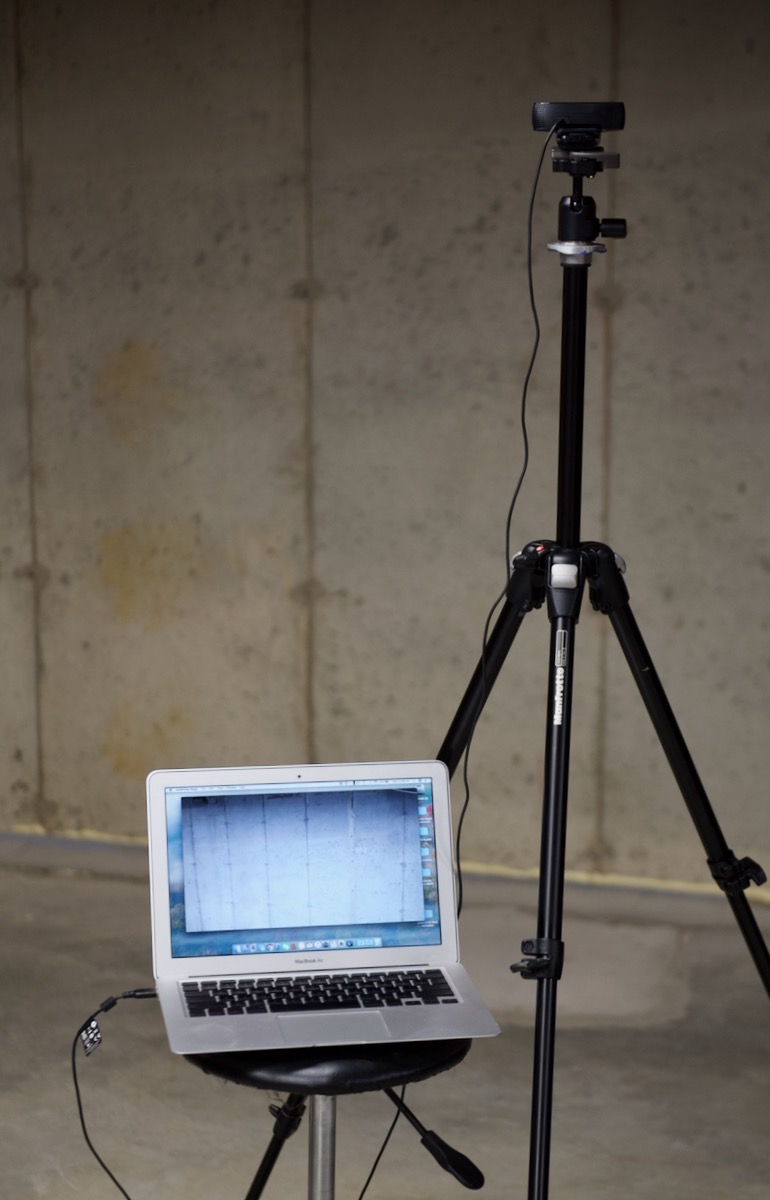
Mounting the webcam on a tripod makes for a better viewing angle.
External audio and OBS for better quality
The main thing that separates 'pro' level video from most other video is having good, clean audio. The video could look crisp and beautiful, but if you can barely hear the person speaking, or if the sound is distant and full of reverb, it's going to be hard to watch.
Most church sound systems have an audio output or headphone jack. If this is the case, you can run the audio from that output to the input of a laptop. Macs have a single audio jack that can be an input or output, but many PC laptops have a separate audio input, assuming you have a long enough audio cable to go from the sound system to the computer.
You might need to get some help from a sound person to get the right adapter(s) and cabling to get this set up (especially if the sound system is far from the laptop—interference could make the audio signal pretty bad too), but the sound alone makes a huge difference. A wireless A/V transmitter and receiver could work, unless your church is built with foot-thick masonry walls inside (if you do, most wireless options are kaput, so stick wired audio).
But to use a sound source separate from your webcam, you might also need to change the software you use to stream to YouTube (or Twitch, or Facebook, etc.). The most commonly-used free software for streaming is Open Broadcaster Software (OBS). You can download it for macOS, Windows, or Linux, and it's 100% free (developed as open source software by a community of developers).
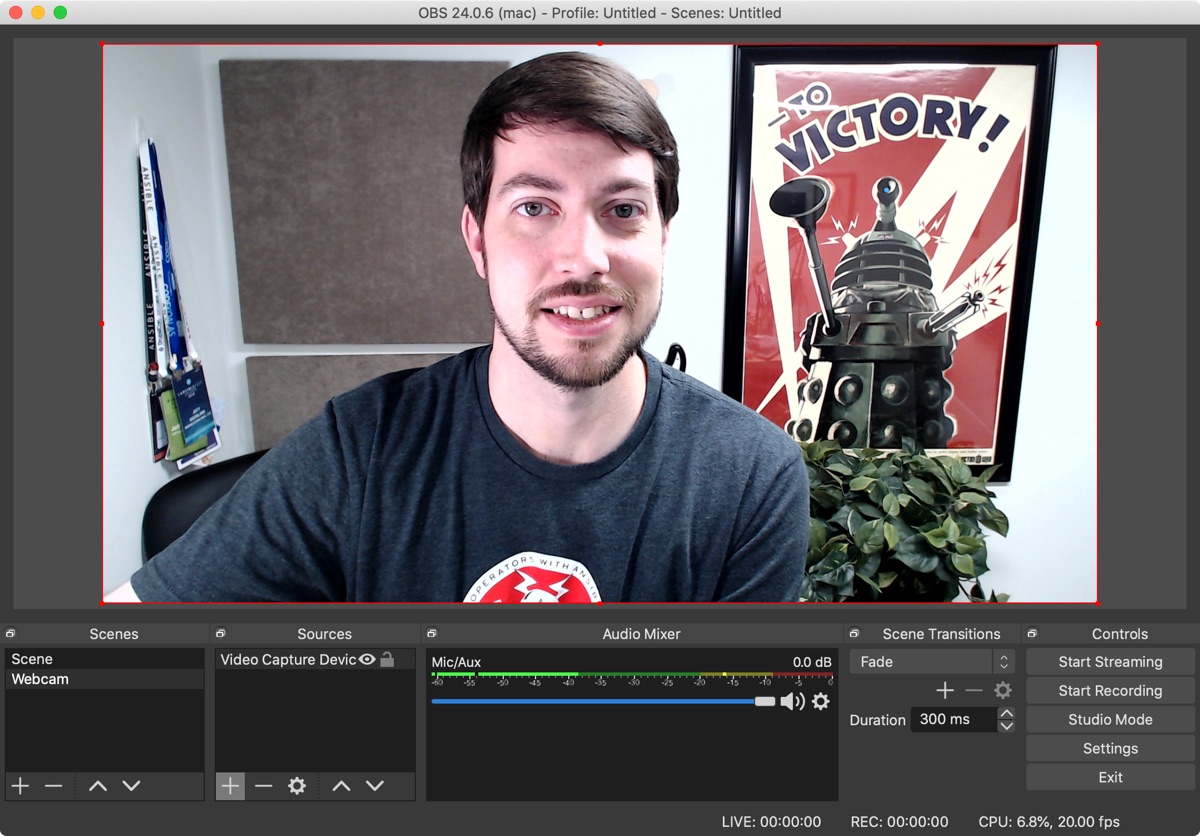
OBS gives you lots of control over streaming and lets you use a separate audio source.
I'm not going to cover the ins-and-outs of OBS here (Digital Trends put out a good guide here), but the main thing to know is you can configure OBS to stream with a camera for the video signal, and any audio input as the audio signal.
If you don't want to or can't get sound out of the church's built-in sound system, and have a wireless lavaliere microphone (I use and recommend this Audio-Technia PRO 88W system), and only one person (a priest or celebrant) is talking, then you could put the mic transmitter on the priest and plug the receiver directly into the laptop's input for sound.
Using a camera with zoom and clean HDMI output
If you have a camera like the Sony a6000 already, or another camera with "clean" HDMI output, you can plug it into your computer using an HDMI capture device like the Cam Link 4K. You can use better lenses (with zoom capabilities), and get sharp, professional-quality video using this setup (check out one of my videos using this kind of setup).
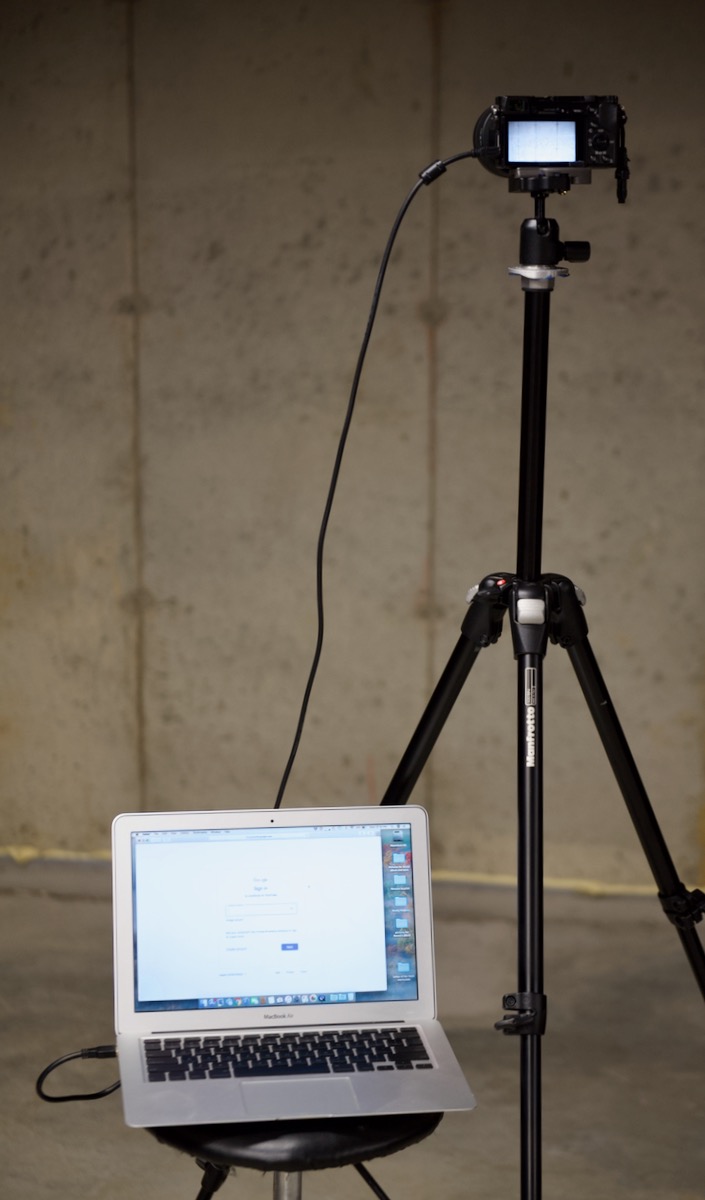
Using a better camera with a zoom lens gives pro-level video.
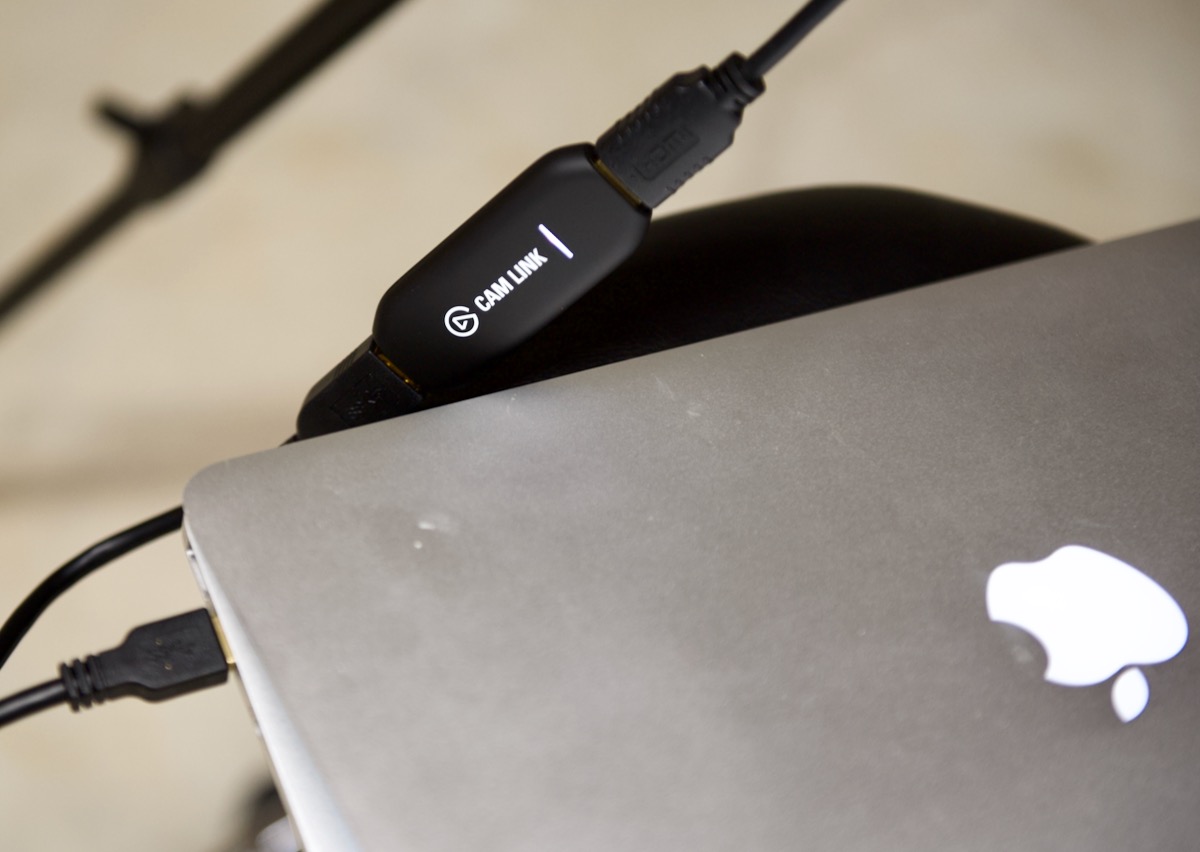
You can plug in any camera with HDMI output into a device like the Cam Link to use it in OBS or other streaming software.
You can also have more than one video input (either a webcam and the Cam Link, or even multiple Cam Links) and use OBS to transition between the two (or even have both split screen, though that's probably not a common use case for liturgies—there aren't instant replays or penalty boxes in a church!).
The downside with this approach is it starts getting expensive. Instead of a laptop and webcam (which you probably already have), you now need a camera, an HDMI adapter, and a Cam Link. And the camera battery probably won't last too long (20-30 minutes tops), so you'd have to figure out a way to power it externally (with my Sony a6000 I use this power supply).
If you go with multiple cameras, you can have one with a zoom lens (even the simple zoom lens like a Sony 55-210mm lens is adequate indoors with okay lighting) on a tripod (ideally with a fluid pan-and-tilt video head—I use this one, which is built like a tank), and another with a wide-angle lens that is zoomed out on the entire sanctuary area. An operator can then use the zoom/pan/tilt camera to focus in on the current action (e.g. at the altar, the lectern, or the presider's chair, as needed), and use OBS 'scenes' to transition between that camera and the wide angle when the presider moves around.
If you have any questions about this setup, or want to share what you're doing to stream liturgies, please leave a comment below!
Comments
Someone mentioned in an email:
I responded with: Yes! The Tascam iXZ (which I reviewed here) should be able to take the headphone output from the board and get it into the iPhone or another smartphone (assuming it has a built-in headset jack, or you have the Lightning-to-headset jack adapter cable).
The iXZ should be set to 'guitar' mode, with phantom power 'off', and then play around with the levels coming from the headphone jack and on the iXZ itself to ensure the best sound quality. You will definitely need to do a couple tests (even just using the built in Camera app) to check the sound levels and make sure there's no hum or buzz (lower quality cables or cables that are very long or near power equipment can cause this).
If you also need to provide power to the phone while recording and its a newer iPhone with Lightning port only, you can still charge while passing in audio with something like the Belkin btWHT 3.5mm Audio + Charge Rockstar adapter.
Another thing I talked to someone about earlier today: If you have a wireless mic and can't get the signal using a cable from your sound system's output into the mic transmitter pack (either because you don't have the right adapters or can't get the level right), you might still be able to get decent sound by plugging some sort of speaker into your sound system, and setting the wireless mic (lav or handheld) in front of it (ideally on a stand or on a rubber pad, to minimize vibrations). Not as good as direct wired solution, but some people have a spare wireless mic but can't get it into the sound system directly, or there are other microphones or multiple people speaking to the point where you can't just have the mic on one person/priest the whole time.
Another blog post that was posted to expand on what I wrote here, and include some additional details about a parish's streaming setup, is on the BreadAlive site: Streaming @ Holy Family “101”. Some great tips and things to be aware of in that blog post!
I feel like I keep talking to myself here 🤔
Some more resources I was sent by Richard H:
A parishioner at another church recently mentioned his parish was doing the live stream from a smartphone in the middle aisle, but it was far enough back (so it could get the entire sanctuary) the the audio sounded really bad.
He purchased a Rode Wireless Go mic system, and also a TRRS mic adapter so he could plug the receiver's output directly into the iPhone.
That solution seems to work very well, and would be a quick way to get much better sound in this kind of situation!
Hi Jeff. Thank you for this info. We are currently live-streaming our church service on Facebook and hearing comments that the piano being played sounds "tinny." Apparently that is because the microphone isn't picking up the base from what someone said?
We are using a simple webcam and a bluetooth microphone. Would you have any suggestions on a microphone that could pick up the base from the piano?
Unfortunately there are many components to making sound from different musical instruments sound good on a live stream. Not only does the microphone (or multiple microphones) matter, the microphone pre-amp (if one is used), sound mixer (if one is used), audio interface (if one is used), and software settings in the live stream software all come into play.
Most USB mics are low-quality compared to a good dedicated microphone (think classics like a Shure SM57 or Shure SM58). And most USB mics are also only optimized for voice, and have fairly poor low-end sound.
At the high end you might find mics like the Neumann U87, but that's more for concert or album-quality recordings of pianos.
In general, though, using a decent quality mic like the previously-mentioned SM57 on a mic stand a few feet above / near the piano is going to get a pretty good result. And it's best if you have a mixer in between the mic and whatever device/laptop you're using for streaming, so you can control the levels and tweak the 'EQ' a little, if needed.
Also, just to note—the piano is probably the second hardest instrument to capture well with microphones, in my opinion. The only thing harder is a pipe organ, mostly because you have to account for so many variables with pipe locations and the acoustics of the environment!
Jeff! Thank you so much for your detailed reply. I appreciate it greatly. We started live streaming, probably like everyone else, thinking it was a very short-term solution, and since our state is looking very slow to re-open, especially regarding churches, it's probably a good idea for us to invest in more quality equipment for the long-term. Thanks again!
This blog has helped a church in the uk get going with live streaming using a smart phone with sound fed in using an iRig Stream. We are trying to develop a permanent installation and are currently working with an ELP 5-50mmVarifocal Lens Industrial USB camera but are struggling with frame rate and resolution with normal Sanctuary lighting. You suggest the Sony A6000 which is a big jump in cost. When set up with the power supply can it be boxed up and left unattended like a webcam? Some reassurance before we leap out and buy one would be very valuable!
@David - Glad you got something working! The a6000 is probably not the best option for a more permanent installation. It would likely have some issues with overheating over very long periods of time.
Ideally, you could get a PTZ camera like one from PTZOptics (https://ptzoptics.com/choosing-a-camera-for-live-streaming-church/), as they're made much more robust for permanent installation (and even remote control, if needed).
Hi Jeff. I am using a logitech brio webcam connected to my laptop and the video looks good, but I would like to somehow directly run the audio from the pastor's wireless mic and from the microphone on the ambo into my livestream instead of using the webcam microphone. How do I go about doing this? I'm using streamlabs as my encoder. Thanks!